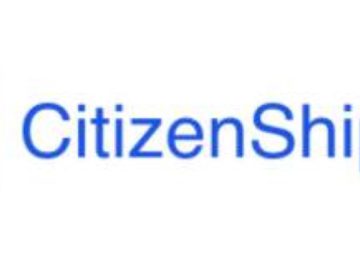Imagine a world where your elderly mother could receive quality care at home without bankrupting your family. Now picture that same world, but with a twist: The caregiver isn’t a typical home care worker, but a local college student or a compassionate retiree from your neighborhood.
Vice President Kamala Harris’ recently announced “Medicare at Home” plan brings us tantalizingly close to this reality. As leaders in the caregiving space — Neal runs a fast-growing caregiving startup and David leads the palliative care division of a large health care system — we’ve witnessed firsthand the promise and pitfalls of our current home care system. Harris’ proposal is a step in the right direction, but to truly solve our looming care crisis, the U.S. needs to think bigger and bolder.
The demographic tsunami heading our way is undeniable. By 2030, all baby boomers will be over 65, making up 21% of the population. Already, a whopping 53 million Americans provide unpaid care for loved ones, and that number is only going to rise with our aging population.
The current caregiving infrastructure in America is woefully inadequate. People struggle to provide care for their aging loved ones, often at great personal and financial cost. These unpaid family caregivers don’t get much help. Many are women, disproportionately women of color. This financial burden is compounded by the fact that many family caregivers reduce work hours or leave their jobs entirely to provide care, hurting their own financial security and the broader economy. Consider this: Family caregivers lose an average of $304,000 in wages and benefits over their lifetime. That’s not a typo. It’s the cost of putting your career on hold to care for a loved one.
Harris’ plan recognizes this, aiming to support the “sandwich generation” — adults juggling care for both children and aging parents. By covering costs for in-home aides, the plan could alleviate financial burdens and delay costly nursing home admissions. It’s a win-win: respecting the dignity of older adults who wish to age in place while reducing long-term Medicare costs.
My aunt’s ‘Kafkaesque journey’ to get the home care she needs
However, the proposal’s focus on “designated” Medicare aides risks doubling down on a broken home care system already buckling under workforce shortages and regulatory burdens. The home care industry struggles with high turnover and unmet demand. Merely injecting more funds without addressing structural issues is like filling a leaky bucket without patching the holes.
The Harris proposal is also inconsistent with what people want and need. One of us led a study funded by NIH to understand the home care needs of people living with cancer. We interviewed 300 patients about a portfolio of services to see which were most important. In asking about caregiving at home, patients told us that they’d place a 50% higher value on vouchers that could be used to pay family, friend, and informal caregivers, compared with home health aides through an agency. Voucher and self-directed programs give caregivers more choice and have been successfully piloted in states like New York. According to research from the RAND Corporation, nearly one-third of Americans already hire informal caregivers for elder care rather than through traditional care agencies.
To truly transform home care, we must embrace innovation and flexibility. While the term “gig economy” may raise eyebrows due to concerns about both worker exploitation and threats to customers in some sectors, we envision a more ethical application of its core principles: flexibility, technology-enabled matching, and expanded worker pools. The gig economy model, which has reshaped industries from ride-sharing to food delivery, offers a compelling blueprint for caregiving. Our vision for caregiving emphasizes fair compensation, worker protections, and quality care. By leveraging technology platforms responsibly, we can create a more dynamic, responsive caregiver workforce that includes not just traditional aides, but also students, retirees, and others seeking flexible work.
Of course, not everyone is qualified to offer reliable, empathetic care, so any plan for Medicare to subsidize the informal care economy must include background checks and mechanisms to ensure safety. That includes real-time GPS-based location tracking and check-in systems, emergency response buttons for both caregivers and care recipients, and regular, randomized quality checks to supplement ongoing reviews from families.
These safety measures create a more secure and dynamic caregiving environment. In fact, the emphasis on technology-driven safety and quality control may contribute to higher consumer satisfaction.
This approach has the potential to lower costs and increase accessibility. In our work, we’ve witnessed how tech-enabled caregiver matching can reduce overhead and allow for more personalized care. We’ve also seen how enthusiastic, energetic students can bring new life and joy to the caregiving experience. It’s a triple win: Families get more affordable care, caregivers enjoy flexible employment, and Medicare could realize significant savings.

Do dementia villages actually work? We just don’t know
Making this vision a reality requires a new regulatory approach. Current regulations, while well-intentioned, often create barriers to entry and stifle innovation.
Moreover, we must broaden our definition of caregivers. Family caregivers, the backbone of our long-term care system, should be eligible for compensation under this Medicare benefit. In our vision, family and friends would be eligible for caregiver vouchers under the Medicare program, recognizing and compensating the critical care they provide. But why stop there? We should include college students, retirees, neighbors, and others who may not fit the traditional caregiver mold. These informal caregivers often bring unique benefits: strong personal connections, understanding of local community dynamics, and fresh perspectives on care.
Critics may argue that this approach could compromise care quality. However, with proper oversight and tech-enabled quality control, we can create a more responsive and accountable system. Tech platforms can enhance safety through background checks, certification verification, tech-enabled monitoring, and quality control through ratings and reviews. These challenges are eminently solvable, and have been solved in other tech-enabled industries ranging from transportation to travel stays. It’s time to bring caregiving into the 21st century.
The economic impact could be substantial. More accessible and affordable home care could lead to significant savings in long-term health care costs as more seniors avoid or delay institutionalization.
It’s crucial to acknowledge that care innovators like CareYaya, Neal’s company (where David is also a consultant), would benefit from such a plan. However, our primary motivation for proposing changes is to ensure a level playing field where all care providers — traditional home care agencies, tech-enabled care innovators, family caregivers, and informal caregivers — can benefit equally. The current proposal favors only the highest-cost portion of the market: traditional home care agencies. That leaves behind many other care options that are vital to addressing our urgent care crisis.
To protect seniors and ensure quality care, we propose a voucher system that empowers families to choose their care providers. According to Caregiver Action Network, 78% of adults requiring long-term care solely rely on family and friends for support. Our approach would bring this existing “gray market” of family and informal caregivers into a more regulated and supported economy.
Harris’ Medicare at Home plan is a crucial first step in addressing America’s looming care crisis. But to truly meet the challenges of our aging population, we need to think beyond traditional models. By embracing innovation, flexibility, and a broader vision of caregiving, we can create a system that not only cares for our elders but also empowers families, creates economic opportunities, and builds stronger communities.
Neal K. Shah is the chief executive officer of CareYaya Health Technologies. He runs a social enterprise and applied research lab utilizing AI and neurotech to advance health equity for the aging population. David Casarett is chief of palliative care at Duke Health and a health services researcher at Duke University School of Medicine.





